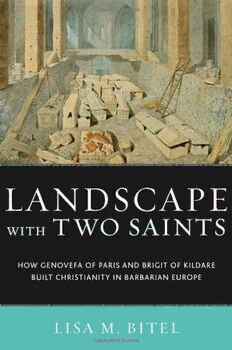
Landscape with Two Saints: How Genovefa of Paris and Brigit of Kildare Built Christianity in Barbarian Europe PDF
316 Pages·2009·2.544 MB·English
Most books are stored in the elastic cloud where traffic is expensive. For this reason, we have a limit on daily download.
Preview Landscape with Two Saints: How Genovefa of Paris and Brigit of Kildare Built Christianity in Barbarian Europe
Description:
At a time when Europeans still longed to be Roman and were just learning to be Christian, two extraordinary holy women-Genovefa of Paris (ca. 420-502) and Brigit of Kildare (ca. 450-524)-began to roam their homelands. One of these saints raised an apostolic church in the imperial city that would become Paris. The other scavenged fragments of that dwindling empire for the foundations of a grand Roman basilica built deep in barbarian territory. Both brought Christianity and romanitas (Roman-ness) to their people. By examining the ruins of their cities and churches, the workings of their cults, and the many generations of their devotees, Lisa Bitel shows how Brigit and Genovefa helped northern Europeans map new religion onto familiar landscapes. Landscape with Two Saints tells the twin stories of these charismatic women but also explains how ordinary people lived through religious change at the very beginning of the Middle Ages. Tales of ancient conversions on distant landscapes have much to teach us about lived and built religion, why people choose new beliefs, and how they act out those beliefs in meaningful ways. The combined history of Brigit and Genovefa explains not just how a couple of legendary peripatetic women could become targets of devotion, but how and where Europeans became Christian, and what it meant to them on a daily basis. The story of these two saintly cults-not just in the pages of manuscripts, but on the streets of cities, in the stones of cemeteries, and in the walls of churches-also demonstrates the pervasive influence of gender and ethnicity, as well as regional culture and material environment, on the whole process of religious change. Bitel contends that in the building blocks of their churches and the tracks they once traveled, Genovefa and Brigit show us what the written words of missionaries and theologians never can: the active participation of converts in the history of their own conversion.
See more
The list of books you might like
Most books are stored in the elastic cloud where traffic is expensive. For this reason, we have a limit on daily download.
